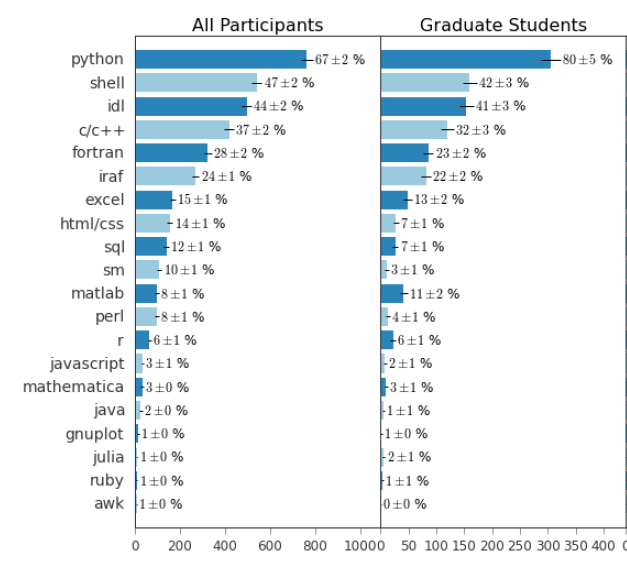Python Help
Topics:
(What follows below is my python help
stuff from long past semesters, kept here in case its useful....)
Python Links
If you are new to Python, we're
recommending that you install the Anaconda
distribution on your computer. But if you already are up and
running and happy with some other Python install, that's fine
too, but you will want to make sure that astropy
is installed (Anaconda installs/updates astropy automatically)..
Here
is
the general documentation for the various packages included in
Anaconda.
And for writing/debugging python code, many of you use jupyter
notebooks, which work fine. I have also found using
the Spyder
environment to be helpful.
Getting help
First of all,
try python inline help. For example, help on the scatter command
can be obtained by saying help(plt.scatter) (presuming
you've already loaded the pyplot package, i.e. import
matplotlib.pyplot as plt)
Second,
check some online tutorials/references, such as:
- My very simple code examples:
- Jakub
Prchlik's python tutorials from my Spring 2015 ASTR 222
course.
- Documentation for major python packages
(language, plotting and analysis, and astro-specific):
Third
(or maybe first), try THE GOOGLE. For example, if I want to
figure out how to fit a curve to data using python, I'll just
google fit curve to data
python. Or if I have a bizarre error message that I
don't understand, I'll google <bizarre
error message> python. adding astropy to the search will
often give you astro-specific results as well, which can be
particularly helpful. You may have to poke around with the
results of those searches to find the best answer, but it
usually works out.
Fourth, ask your
classmates, or the TA, or me. I put this last not because we are
reluctant to help -- we're happy to do so! -- but rather because
the first three things are available to you 24/7 and give
immediate (although admittedly not always helpful) responses.
Why Python?
A survey of coding tools used by research astronomers at all
levels (left) and PhD astronomy students (right).
Taken from Momcheva
& Tollerud (2015).

